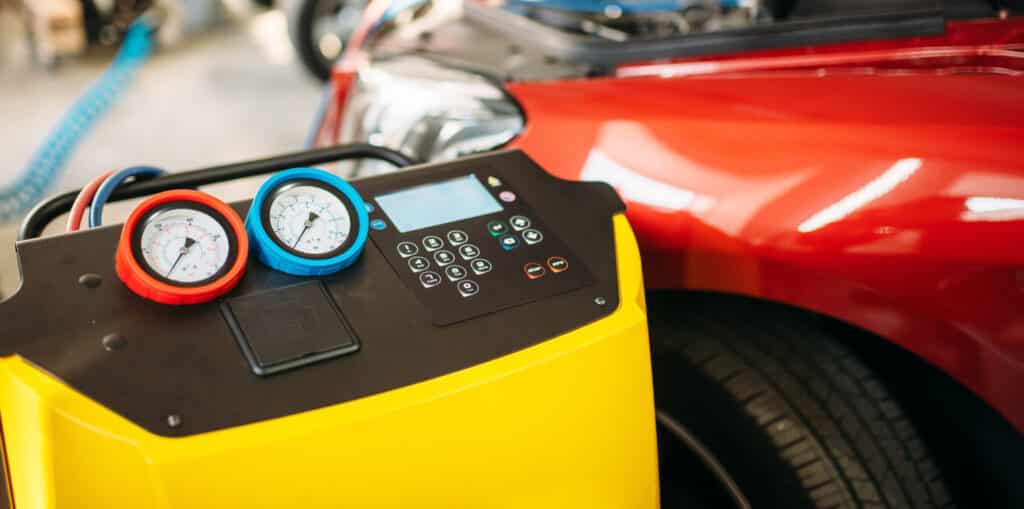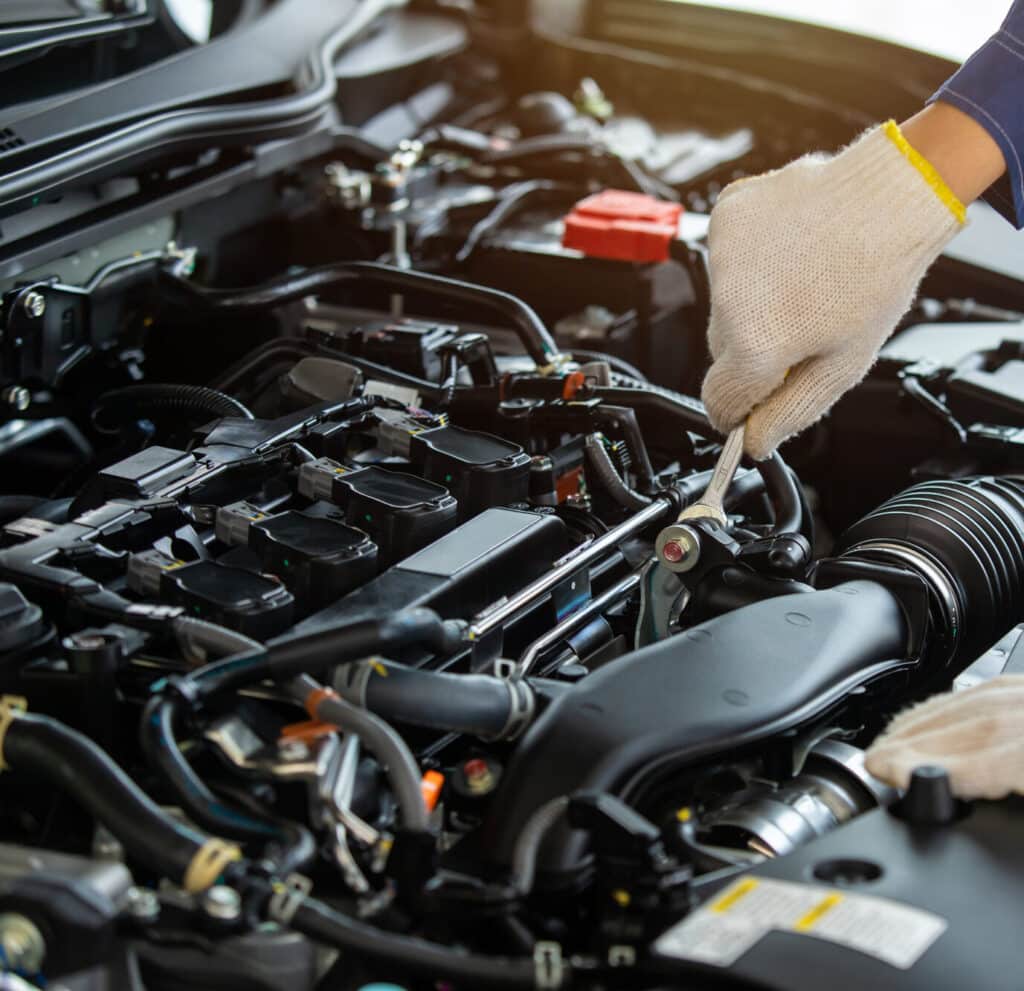Check Engine Light Near Me
Finding Professionals to Check Engine Light Near Me
It’s a familiar yet heart-sinking moment for many drivers – cruising down the road, vibing to your playlist, when suddenly, the dreaded Check Engine Light (CEL) disrupts your driving zen. Panic kicks in. Is it a minor hiccup or a major mechanic bill looming? Before stress takes over, take a breath. This blog is here to be your guide through understanding the Check Engine Light, unraveling its mysteries, and directing you to nearby professionals who can assist to check engine light near me.
No matter where you are, help for your CEL concerns may be closer than you realize. With expert insights and practical tips, we’ll shed light on why that warning light is on and connect you with top-notch local help to address not just the symptoms but the root cause. Say goodbye to panic and hello to peace of mind knowing you’re armed with knowledge and assistance to tackle whatever engine issue comes your way.
The Check Engine Light: What Does It Really Mean?
When the Check Engine Light glows ominously on your dashboard, it’s the car’s way of signaling that something is amiss within the engine or its ancillary systems. But it doesn’t specify what exactly. The causes can range from a loose gas cap, which is a quick fix, to more severe issues like a malfunctioning oxygen sensor or problems with the engine’s emission system. Understanding that the CEL is essentially a cry for help from your vehicle, albeit an ambiguous one, is the first step towards diagnosing and addressing the underlying issue. This is where the expertise of professionals comes into play, ensuring accurate identification and rectification of the problem.

Engine Light Inspection Service
Top Reasons Your Check Engine Light May Be On
There’s a myriad of reasons why your dashboard is flashing that ominous Check Engine Light, but here are some of the most common culprits:
- Loose or Faulty Gas Cap: Believe it or not, something as simple as a gas cap not being screwed on tightly enough can trigger the Check Engine Light. It’s a minor issue but one that can affect your car’s fuel efficiency.
- Oxygen Sensor Failure: The oxygen sensor plays a critical role in measuring the amount of unburned oxygen in your car’s exhaust system. A malfunction can lead to engine performance issues, increased emissions, and reduced fuel economy.
- Catalytic Converter Failure: This component helps reduce exhaust gases’ toxicity. If it’s failing, not only will your car likely fail an emissions test, but you may also experience reduced performance and fuel economy.
- Mass Airflow Sensor Malfunction: This sensor measures the amount of air entering the engine to determine how much fuel is needed to run your engine efficiently. A failure can result in decreased fuel efficiency, engine stalling, and other performance issues.
- Spark Plugs/Ignition Coils Issues: Worn or fouled spark plugs can cause misfires, poor fuel economy, and reduced power. Similarly, faulty ignition coils can lead to the same symptoms.
How to Respond When Your Check Engine Light Comes On
When faced with the glaring Check Engine Light, it’s crucial to remain calm and assess the situation wisely. Here’s what you can do:
- Check the Basics: Sometimes, the solution is straightforward. Ensure your gas cap is tight and that there are no obvious signs of engine distress like strange noises or smoke.
- Note the Light’s Behavior: Is the light steady or blinking? A steady light often suggests a less urgent issue, while a blinking light indicates a more severe problem that requires immediate attention.
- Use a Diagnostic Scanner if Available: If you have access to an OBD-II scanner, plug it into your car’s diagnostic port. The codes it retrieves can give you a hint about what’s wrong, which you can research or take to a professional for interpretation.
- Consult a Professional: Once you have some initial information, visit a reputable mechanic or auto repair shop. They have the tools and know-how to diagnose the problem accurately and recommend a course of action.
- Address the Issue Promptly: Ignoring the Check Engine Light can lead to more significant, more expensive problems. Even if the light turns off, the issue that triggered it might still exist.
DIY Checks You Can Perform Before Heading to a Professional
While some issues triggering the Check Engine Light (CEL) necessitate a visit to an auto repair shop, there are a few simple checks you can perform yourself. These initial steps can help you understand the severity of the situation and might even resolve the issue without needing professional intervention.
- Visual Inspection: Begin with a visual check of your engine bay. Look for any disconnected hoses or wires that could be causing the problem. Ensure everything is securely connected and there are no obvious signs of wear and tear.
- Check the Gas Cap: A loose or damaged gas cap is one of the simplest yet common causes for the CEL to come on. Tighten the cap until you hear it click, or inspect it for cracks and replace it if necessary.
- Listen for Unusual Noises: Start your vehicle and listen carefully for any unusual sounds from the engine, such as knocking or hissing. These can indicate a variety of issues that might be causing the CEL to illuminate.
- Inspect the Air Filter: A clogged air filter can reduce airflow to the engine, affecting its performance and possibly triggering the CEL. Check your vehicle’s air filter to see if it’s dirty and needs replacement.
- Review the Oil Level and Quality: Low engine oil level or oil that is dirty and needs to be changed can also lead to the CEL lighting up. Check your oil level using the dipstick, and if it’s low, top it up. Consider an oil change if the oil is visibly dirty or if you’ve exceeded the manufacturer’s recommended oil change interval.

Auto Inspection
Finding the Right Professional Help Near You
When the Check Engine Light refuses to go off despite your basic troubleshooting, it’s time to seek out professional help. Choosing the right auto repair shop or mechanic can be daunting, but here are some tips to ensure you find a reliable service provider:
- Seek Recommendations: Ask family, friends, or coworkers for referrals. Personal experiences can guide you to trustworthy mechanics known for their quality work.
- Check Reviews: Online reviews on platforms like Google, Yelp, or specialized automotive service review sites can offer insights into a shop’s reputation and customer satisfaction levels.
- Verify Certifications: Look for certifications like ASE (Automotive Service Excellence) which indicate that the technicians have passed tests to validate their expertise.
- Experience with Your Car Model: Ensure the shop has experience with your specific vehicle model. Specialized knowledge can lead to faster diagnostics and more accurate repairs.
- Get Multiple Estimates: Don’t hesitate to shop around and get quotes from different repair shops. Compare not just the costs but also what services they propose.
- Ask About Warranties: Inquire about the warranty policy on repairs. A trustworthy shop will guarantee their work, offering peace of mind on the services provided.
Cost Considerations: Professional Diagnostics and Repair
When faced with the necessity of professional engine diagnostics and repair, understanding the potential costs involved is critical for vehicle owners. The expense for diagnostic services can vary widely, depending on the complexity of the issue and the rates of the repair shop. Repair costs, on the other hand, are significantly variable, influenced by factors such as the nature of the problem, the cost of replacement parts, and labor rates. Labor costs are often charged by the hour and can vary based on the geographic location and the shop’s reputation. It’s essential for vehicle owners to request detailed quotes that break down the cost of parts and labor, ensuring transparency and preventing unexpected expenses. Additionally, comparing quotes from various service providers can help in finding a balance between expertise and cost-effectiveness. Remember, investing in quality repairs not only resolves immediate issues but also contributes to the longer-term reliability and performance of your vehicle.
In conclusion, navigating the complexities of Check Engine Light (CEL) diagnostics and repairs requires a proactive and informed approach. From selecting a reputable auto repair shop and understanding the significance of diagnostic tests, to being aware of potential costs and the importance of preventative maintenance, each step plays a crucial role in ensuring the health and longevity of your vehicle. By empowering yourself with knowledge and adhering to recommended maintenance practices, you can minimize unexpected issues, optimize your vehicle’s performance, and maintain its safety on the road. Remember, a well-maintained vehicle is not just about preventing inconveniences; it’s about investing in your peace of mind and the future value of your automobile.
https://www.google.com/maps?cid=257524321519224003

